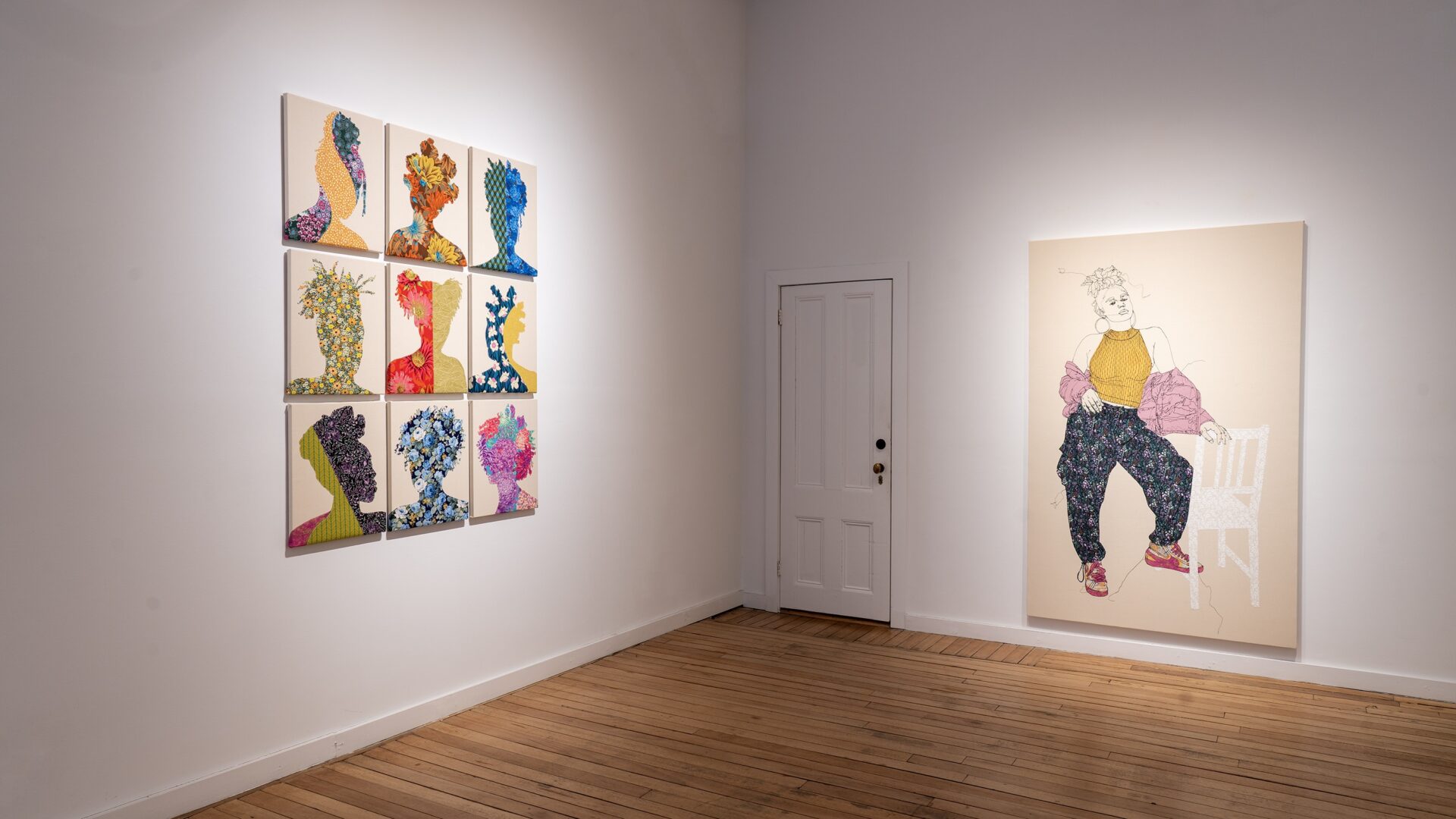
I still recall the first time I was introduced to Gio Swaby’s magnificent textile portraits. I remember feeling a sense of pride as I witnessed women who looked much like my own aunties, cousins, and girlfriends celebrated in spaces that have historically misrepresented Black people. When you experience Gio’s vibrant portraits the compassion and care that she has for her subjects is palpable. Her work oozes love, beauty, liberation, and joy. Her affinity for thread and cloth is undeniable too.
Gio’s mom was a tailor. She made garments, so thread, fabric, and sewing machines have always been part of Gio’s life. Growing up, cloth was so present that she thought it was normal for every family to have a dining room as a sewing room. Because of its continuous presence, she never saw sewing as an art form. In fact, she didn’t plan to study art at all. It wasn’t until she took an art class as a college elective did she begin to see the possibilities. Two art degrees, an MFA, and one residency in the Bahamas later, she found her way back to cloth through a free motion technique that would define her work and lead her on a meteoric rise to contemporary art world fame.
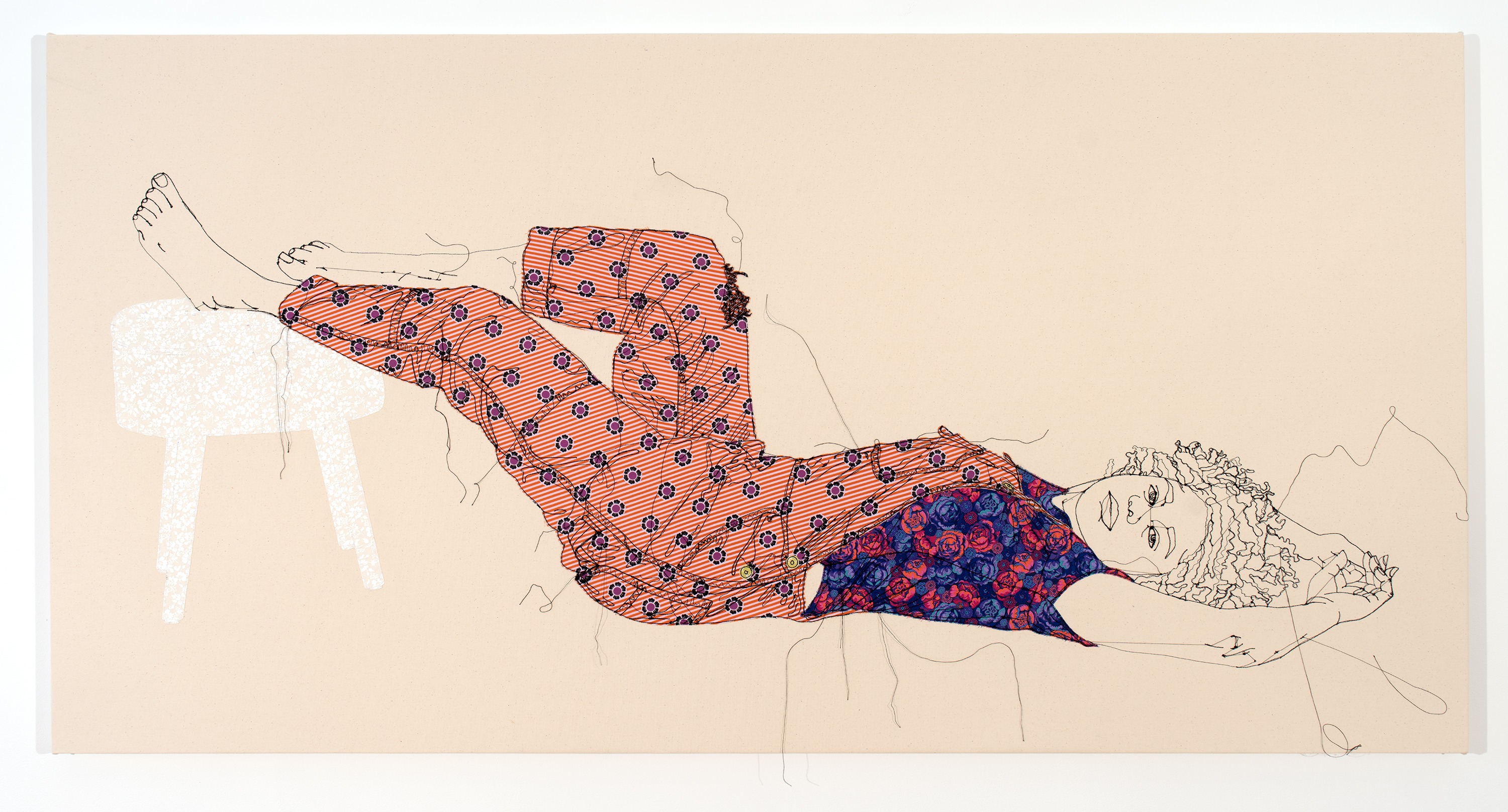
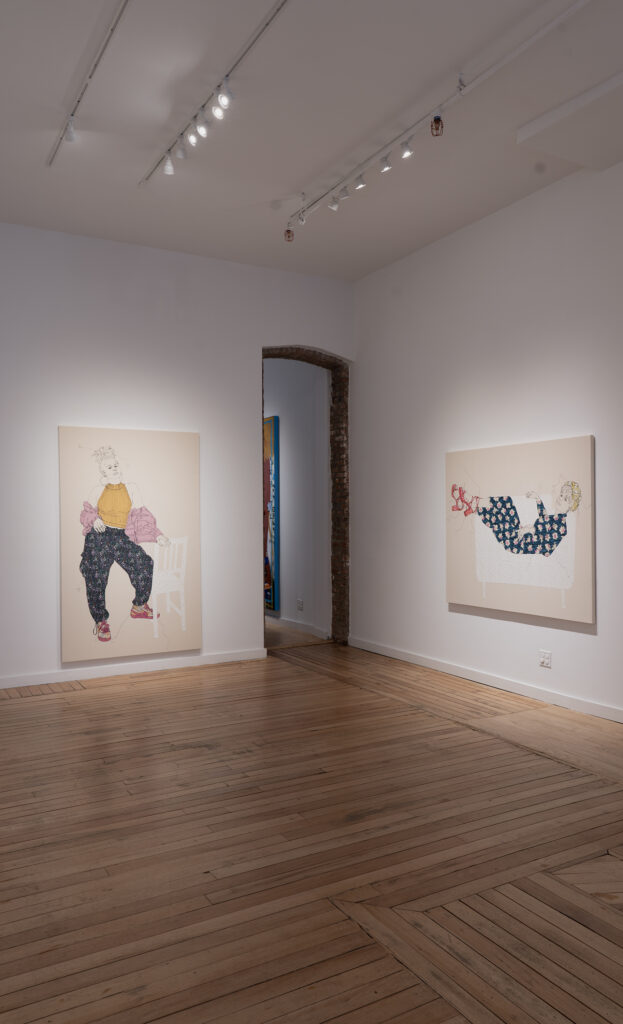
What I admire most about Gio’s approach to free motion quilting is the way she manipulates thread to create movement, shape, and perfectly imperfect lines. I think this speaks to accepting all parts of oneself, the good and the bad, which is the focal theme of the work in her recent solo show, I Will Blossom Anyway. When I asked about her choice to use thread over pencil, she shared that while sketching is part of her creative process, she never connected with drawing. She admitted that she enjoys the unfolding that takes place with sewing. Her comment made me think of the unfolding we’re witnessing as viewers of her inspiring journey.
As I entered Claire Oliver Gallery located in Harlem, NY, I immediately noticed the scale of Gio’s works. In realizing they were self-portraits, I thought about the act of taking up space and being seen in one’s fullness. When I asked Gio about her intention with scale, she confirmed that her move to horizontal portraits was meant to feel monumental, which is why she chose to reduce the amount of pieces and increase them in size. She also spoke to her work as a reflection of Black women and her desire to create space for them.
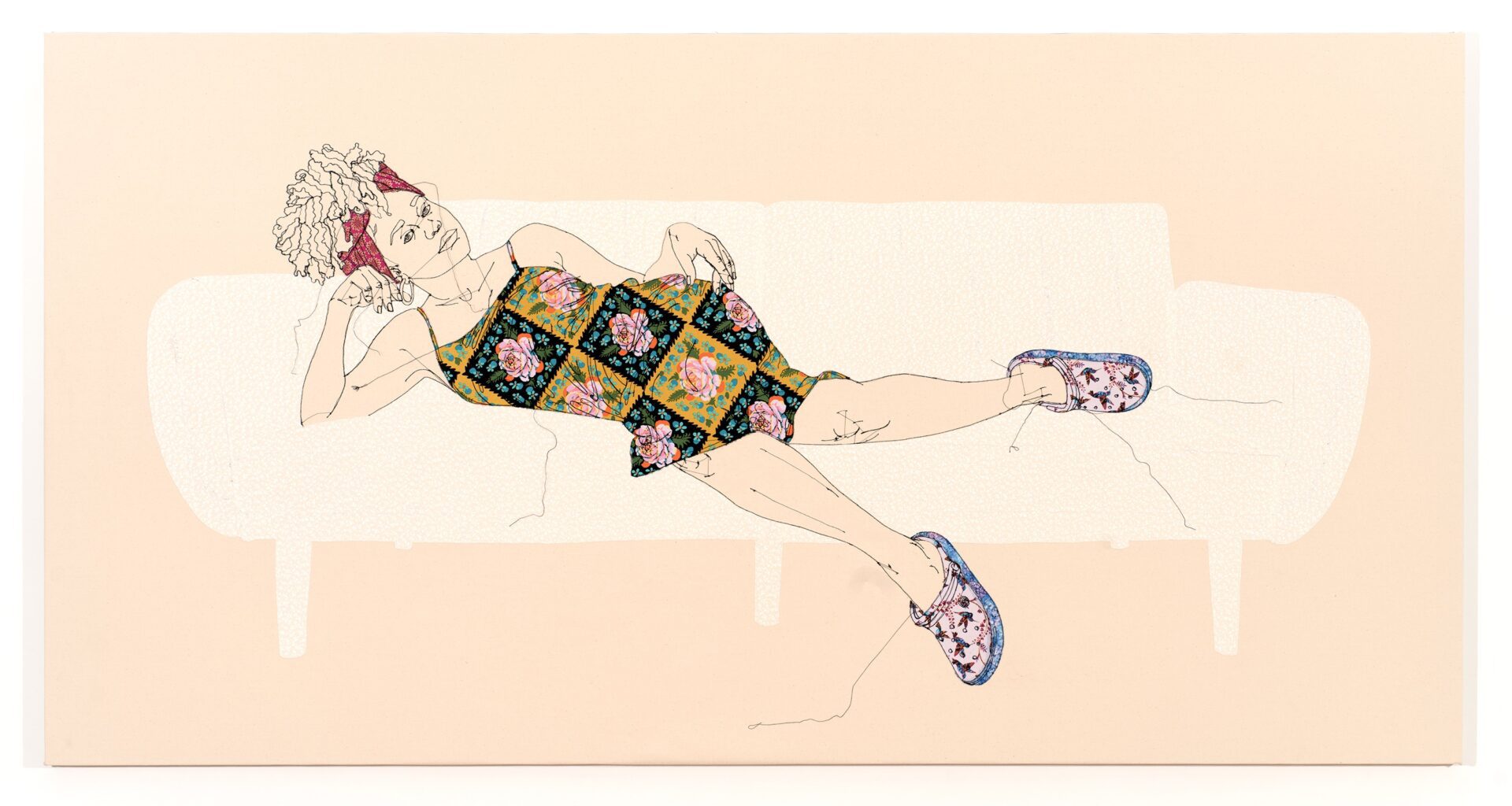
For Gio, the audience she considers first is always Black people, especially Black women and girls. However, she understands the spaces where her work exists have not always been inviting, and were never meant to be. Gio wants to change that and her choice to employ portraiture and accessible materials like fabric are the tools she’s using to create that shift. Much like her audience, Gio labels herself as an outsider, which has prompted her to always consider the Black community’s experience as they enter the gallery space. She wants the viewer to not only feel welcome, but to also feel a sense of comfort, which is why she exhibits a range of portraits, many of them at rest.
While growing up a tailor’s daughter had a major influence on her art, Gio’s inspiration comes from growing up in the Bahamas too. The women in her work are Bahamian. The titles and the language that she uses are rooted in Bahamian culture. Even her fabrics and the patterns she chooses are connected to her upbringing. Her work beautifully weaves culture, country, and new experience. Gio draws from a long tradition of quilting as well, and sees the culture of storytelling in quilt making as anti-colonial in its being. She elaborated on the quilting community and its constant state of exploration and knowledge sharing. I think Gio is part of this expansion.
Even as Gio engages in a practice with a long history, she is actively upending the tradition. As we reflected on disruption she shared that being from the Bahamas forced her to be resourceful as it was difficult to find materials, supplies, and even spaces to work. She admits that her resourcefulness and not having all the tools was her pathway to disruption, further explaining that each time she makes a new portrait, she has to find a new way to do something. She shared that she’s only scratching the surface of this technique.
In addition to her threaded self-portraits, the show included a group of nine applique silhouettes which depict Black women adorning various hairstyles. There’s a beautiful juxtaposition between these works, which are absent of facial features, and Gio’s large scale self-portraits. Not only do they celebrate hair and the extraordinary level of creativity that Black people have exhibited through hairstyles for millennia, but the silhouettes which are visibly Black, offer moments of connection. Gio disclosed that these are some of her more popular pieces and they’ve allowed her to maintain ties to the community she cares about as she returns to self-portraiture.
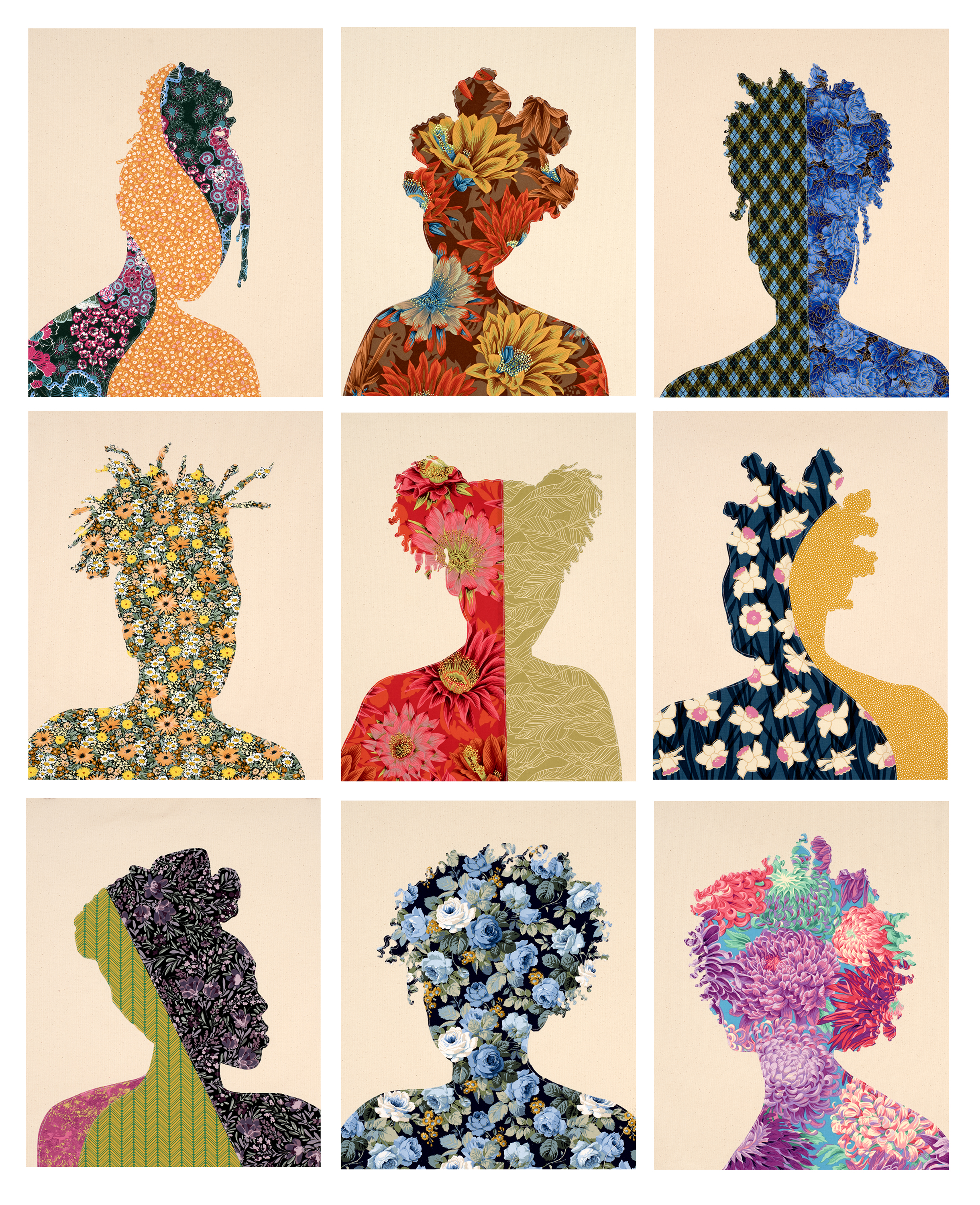
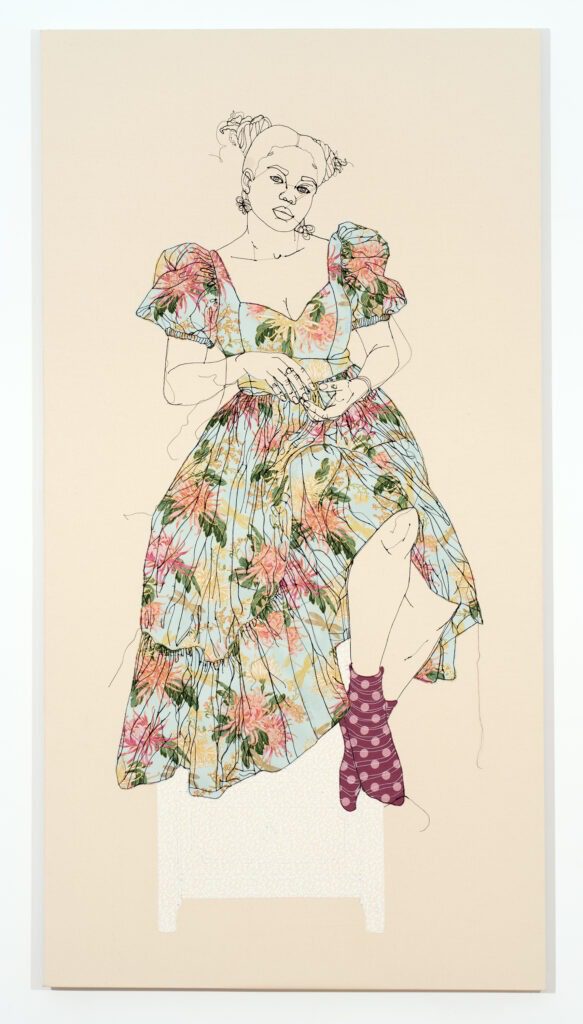
While self-portraits aren’t a new endeavor for Gio, her most recent works mark another shift as she continues to let her guard down and expose intimate parts of herself to the public. This return feels like an unfolding of a new version of Gio, which she calls an exploration of self-love as she is deeply engaged in the process of finding herself, working through grief following loss, and evaluating the many changes that have taken place over the years.
She revealed that it’s easy to create portraits of others and recognize the full beauty of who they are. With self-portraiture this process is fully internal and more self-critical than others. It’s natural to want to omit the imperfections, but she is choosing to leave everything. Not just the mental and emotional, but the physical imperfections as well, because that’s part of who she is too.
Words by Narkita Wiley.
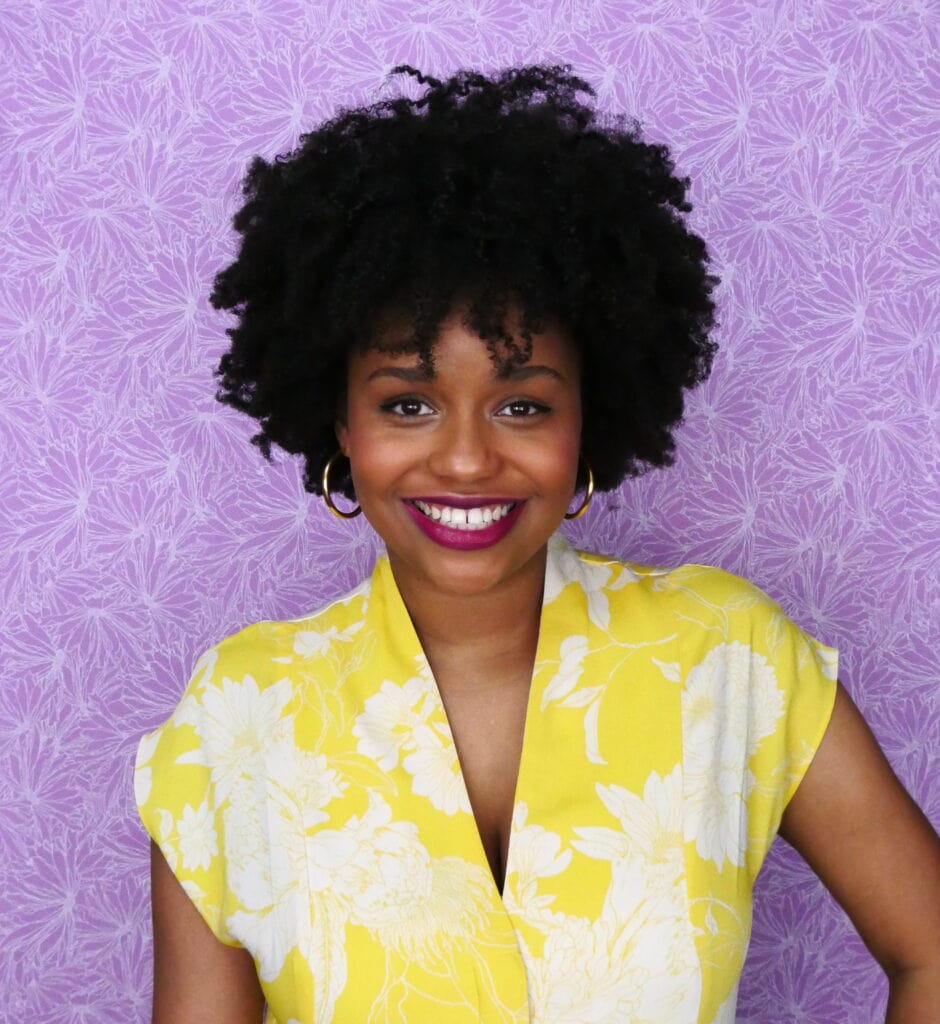
Gio Swaby is a Bahamian interdisciplinary visual artist currently represented by Claire Oliver Gallery. She is known for her textile portraits that explore and celebrate Blackness.
With a multimedia practice that encompasses textile, installation, collage, performance and video, Swaby has exhibited in several galleries and museums including Claire Oliver Gallery in New York City, Die Textile in Schmallenberg Germany and The National Art Gallery of The Bahamas.
Swaby holds an Associate of Arts degree in Fine Art from The University of The Bahamas, a Bachelor of Fine Arts Degree in Film, Video and Integrated Media from Emily Carr University of Art + Design and a Masters of Fine Arts in Interdisciplinary, Art, Media and Design from Ontario College of Art and Design University.
She currently lives and works in Toronto, Ontario, Canada.
